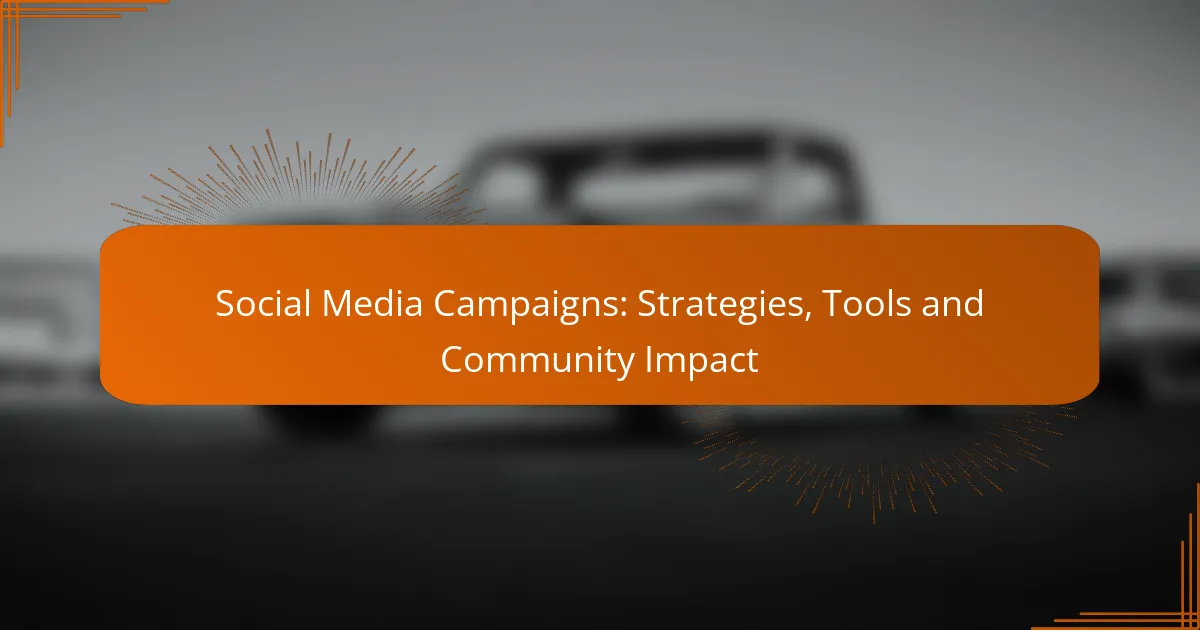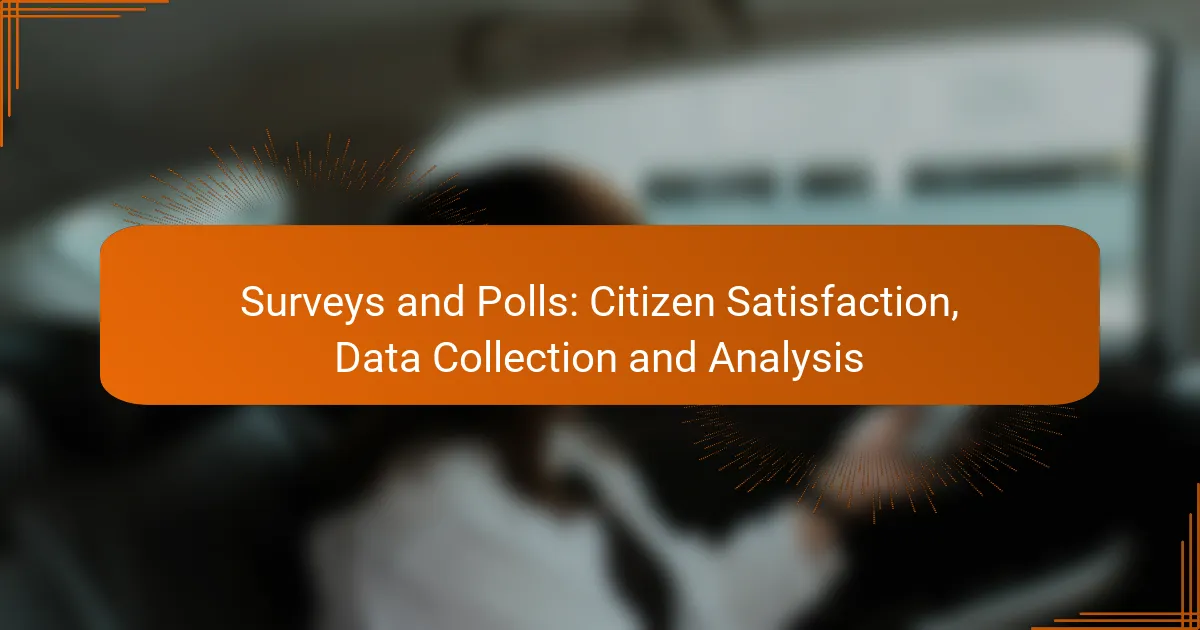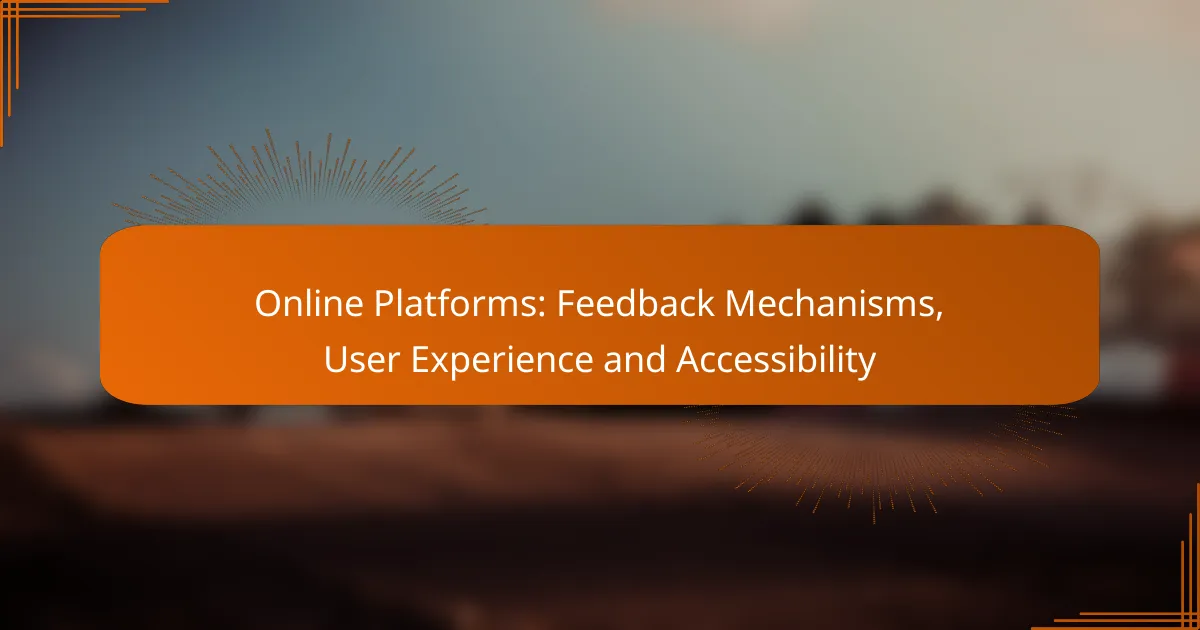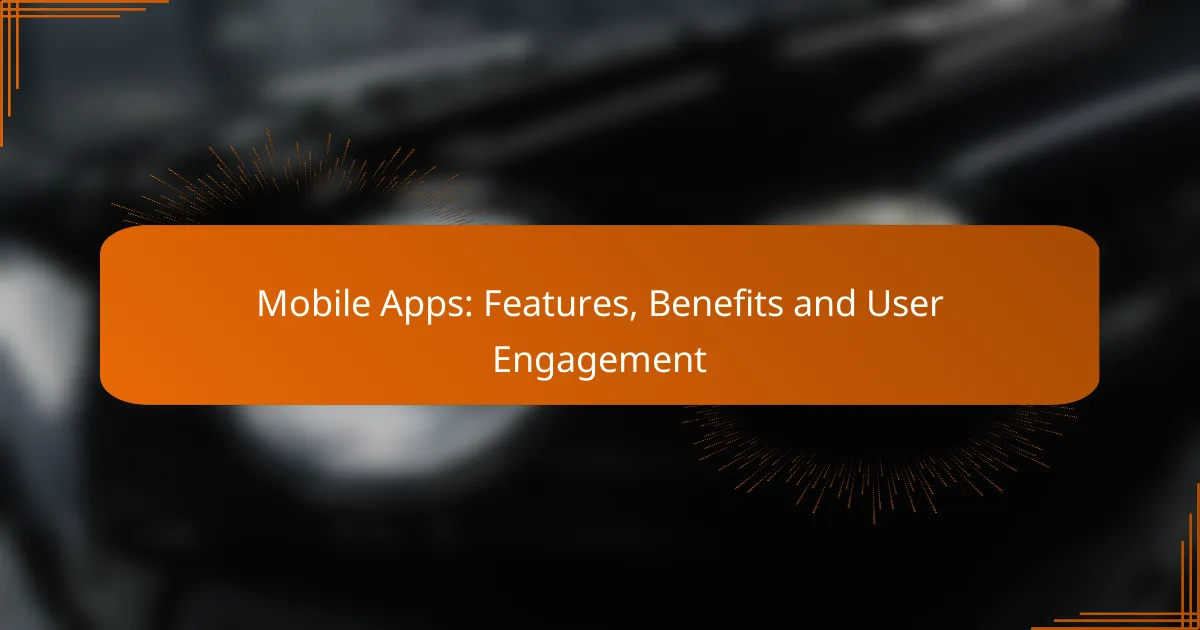Social media campaigns are essential for enhancing brand visibility and driving user engagement through effective strategies that prioritize engaging content and audience interaction. By leveraging various tools, marketers can streamline their efforts and gain valuable insights into audience behavior. Moreover, these campaigns play a crucial role in fostering community connections, raising awareness, and supporting local initiatives, ultimately contributing to social cohesion and economic growth.
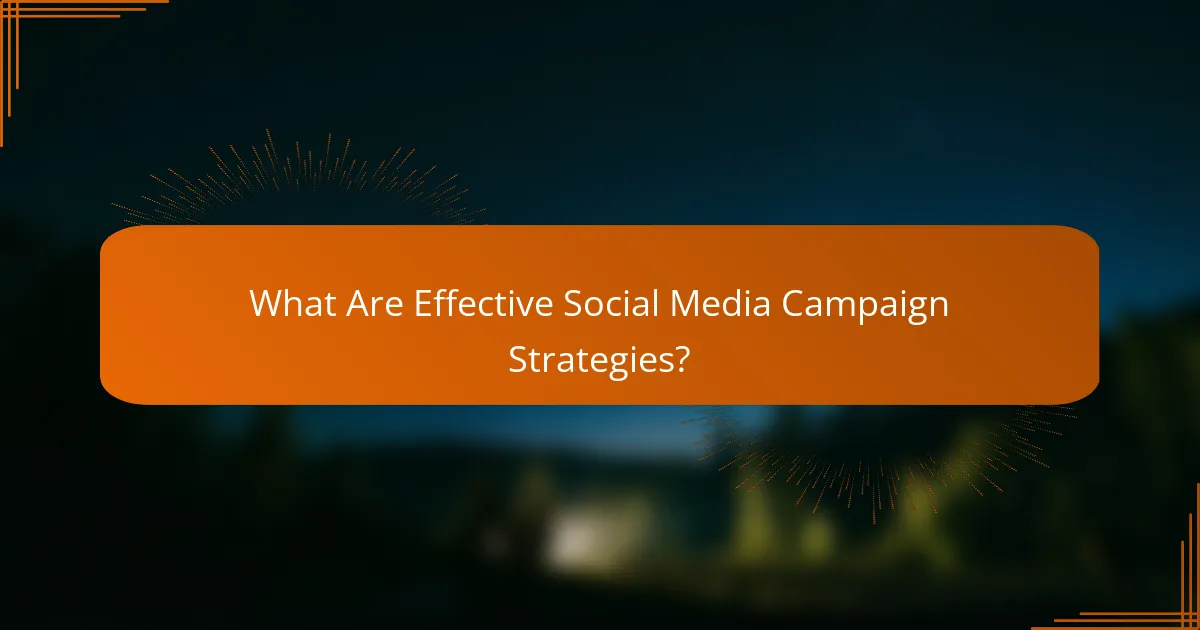
What Are Effective Social Media Campaign Strategies?
Effective social media campaign strategies focus on creating engaging content, fostering audience interaction, and utilizing data for continuous improvement. These strategies aim to enhance brand visibility, drive user engagement, and ultimately achieve specific marketing goals.
Content Creation
Content creation is the backbone of any social media campaign. It involves developing high-quality, relevant material that resonates with your target audience. This can include images, videos, blog posts, and infographics that align with your brand’s voice and objectives.
To maximize impact, consider using a mix of formats and themes. For example, educational content can establish authority, while entertaining posts can increase shareability. Aim for a consistent posting schedule to keep your audience engaged.
Audience Engagement
Audience engagement is crucial for building a loyal community around your brand. This involves actively responding to comments, messages, and mentions, as well as encouraging user-generated content. Engaging with your audience fosters a sense of belonging and loyalty.
Utilize polls, questions, and contests to stimulate interaction. For instance, asking followers for their opinions on a new product can provide valuable insights while making them feel valued. Regularly monitoring engagement metrics can help refine your approach.
Data-Driven Optimization
Data-driven optimization involves analyzing campaign performance to make informed adjustments. By tracking metrics such as reach, engagement rates, and conversion rates, you can identify what works and what doesn’t.
Use tools like Google Analytics or social media insights to gather data. Regularly review this information to refine your content strategy and posting times. A/B testing different types of posts can also help determine the most effective approaches.
Influencer Partnerships
Influencer partnerships can amplify your campaign’s reach and credibility. Collaborating with influencers who align with your brand values allows you to tap into their established audiences. This can lead to increased brand awareness and trust.
When selecting influencers, consider their engagement rates and audience demographics. Micro-influencers often have higher engagement levels compared to larger accounts, making them a cost-effective option for targeted campaigns.
Cross-Platform Promotion
Cross-platform promotion ensures that your message reaches a wider audience by leveraging multiple social media channels. Each platform has its unique audience and content style, so tailor your message accordingly.
For example, use Instagram for visually appealing content, while Twitter can be effective for quick updates and conversations. Promote your campaigns across platforms by sharing links and encouraging followers to engage with you on different channels. This approach can enhance overall visibility and engagement.
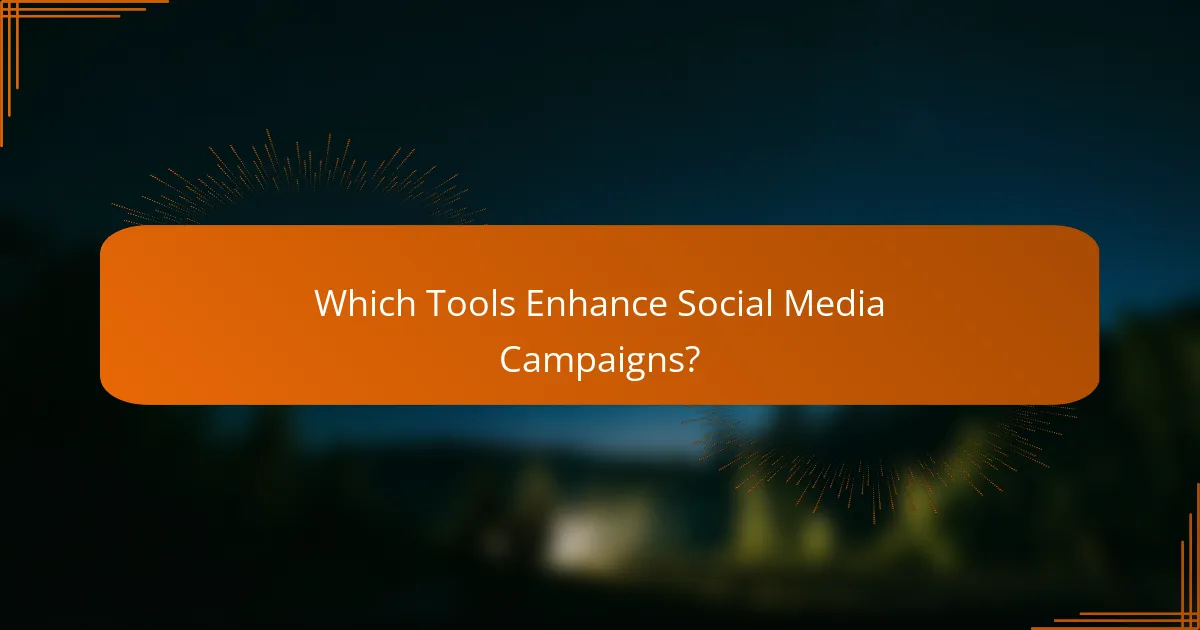
Which Tools Enhance Social Media Campaigns?
Several tools can significantly enhance social media campaigns by streamlining processes, improving engagement, and providing analytics. Choosing the right tools depends on your specific needs, such as scheduling posts, designing graphics, or analyzing audience interactions.
Hootsuite
Hootsuite is a comprehensive social media management platform that allows users to schedule posts, monitor social media activity, and analyze performance across multiple networks. It supports platforms like Facebook, Twitter, Instagram, and LinkedIn, making it a versatile choice for businesses of all sizes.
Key features include a user-friendly dashboard, customizable reports, and team collaboration tools. Businesses should consider Hootsuite’s pricing plans, which vary based on the number of users and features, typically starting from a modest monthly fee.
Buffer
Buffer is known for its simplicity and effectiveness in scheduling social media posts. It allows users to create a posting schedule and automatically share content at optimal times, maximizing reach and engagement. Buffer supports various platforms, including Instagram, Twitter, and LinkedIn.
One of Buffer’s standout features is its analytics, which provide insights into post performance. Users should be aware of Buffer’s tiered pricing, which offers basic functionalities for free, with more advanced features available in paid plans.
Canva
Canva is a graphic design tool that simplifies the creation of visually appealing social media content. With a wide range of templates and design elements, users can easily produce professional-quality graphics for posts, ads, and stories without needing extensive design skills.
Canva offers both free and paid subscriptions, with the paid version unlocking additional features like premium templates and brand kits. Businesses should leverage Canva’s collaboration features to streamline the design process among team members.
Sprout Social
Sprout Social is a robust social media management tool that focuses on engagement and analytics. It provides features for scheduling, monitoring, and reporting, making it ideal for businesses looking to deepen their understanding of audience interactions and campaign effectiveness.
Sprout Social’s reporting capabilities are particularly strong, offering detailed insights into engagement metrics and audience demographics. While it is on the pricier side compared to other tools, its comprehensive features can justify the investment for larger organizations or those with extensive social media needs.
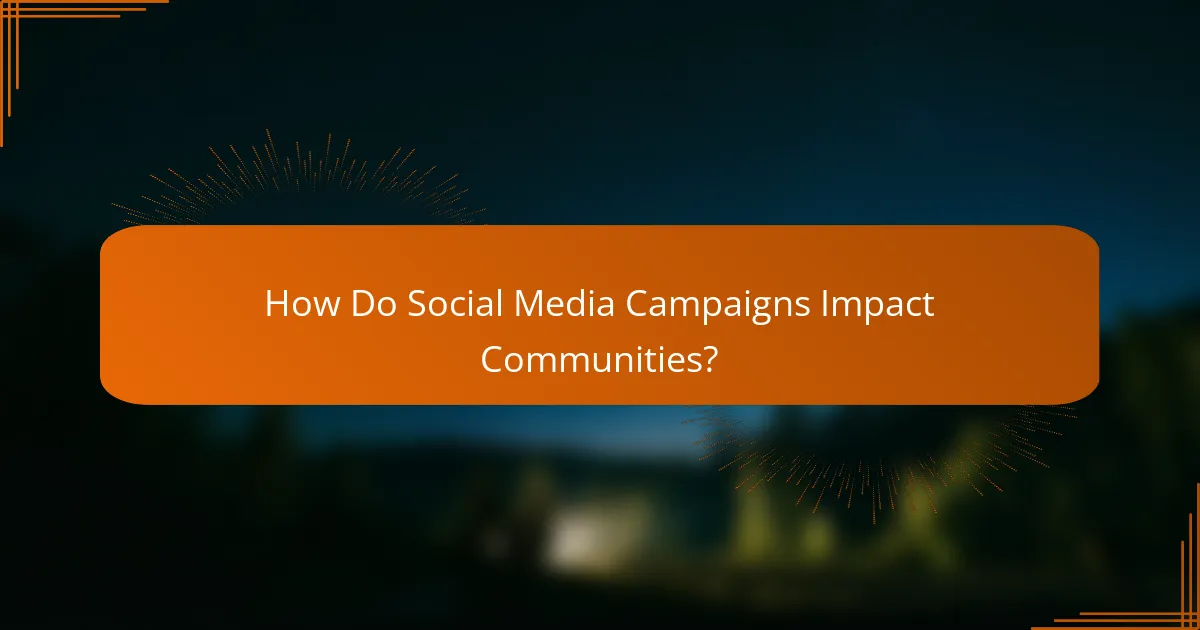
How Do Social Media Campaigns Impact Communities?
Social media campaigns significantly influence communities by fostering connections, raising awareness, and supporting local businesses. These campaigns can mobilize individuals around common causes, enhance social cohesion, and drive economic growth.
Community Building
Social media campaigns create platforms for community members to engage and collaborate. By sharing experiences, interests, and resources, these campaigns help form strong social networks that can lead to lasting relationships.
Effective community-building campaigns often include interactive elements such as polls, Q&A sessions, and live events. These activities encourage participation and make individuals feel valued within the community.
Social Awareness
Social media campaigns play a crucial role in raising awareness about important issues affecting communities. They can highlight local challenges, promote social justice initiatives, and educate the public on various topics.
Utilizing compelling visuals and storytelling can enhance the impact of awareness campaigns. For instance, sharing personal stories or statistics can evoke empathy and motivate community members to take action.
Local Business Support
Social media campaigns can significantly boost local businesses by increasing visibility and encouraging community patronage. Campaigns that spotlight local shops, restaurants, and services can drive traffic and sales, especially during challenging economic times.
Strategies such as featuring customer testimonials, hosting giveaways, or promoting special events can effectively engage the community and stimulate local commerce. Collaborating with local influencers can further amplify these efforts, reaching a wider audience.
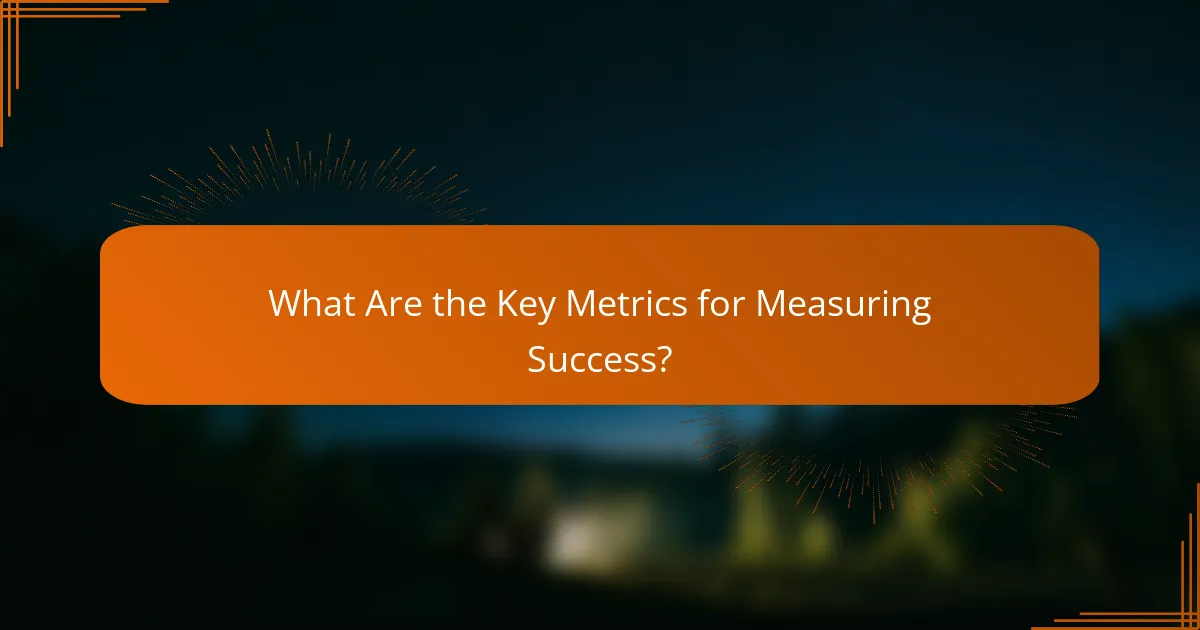
What Are the Key Metrics for Measuring Success?
Key metrics for measuring success in social media campaigns include engagement rate, conversion rate, and reach and impressions. These metrics help determine how well a campaign resonates with the audience and its effectiveness in achieving desired outcomes.
Engagement Rate
The engagement rate measures how actively users interact with your content. It is typically calculated by dividing the total interactions (likes, comments, shares) by the total followers or impressions, then multiplying by 100 to get a percentage.
A high engagement rate indicates that your audience finds your content valuable and relevant. Aim for engagement rates above 1-3% for most platforms, but remember that this can vary significantly by industry and platform.
To improve engagement, focus on creating compelling content that encourages interaction, such as polls, questions, or visually appealing graphics.
Conversion Rate
The conversion rate reflects the percentage of users who take a desired action after engaging with your campaign, such as making a purchase or signing up for a newsletter. It is calculated by dividing the number of conversions by the total visitors, then multiplying by 100.
A strong conversion rate typically ranges from 2-5%, depending on the industry and type of campaign. To enhance conversions, ensure that your call-to-action is clear and that the landing page is optimized for user experience.
Common pitfalls include having a confusing user journey or failing to target the right audience, which can significantly lower conversion rates.
Reach and Impressions
Reach refers to the total number of unique users who see your content, while impressions indicate how many times your content is displayed, regardless of whether it was clicked. Both metrics are crucial for understanding the visibility of your campaign.
High reach with low impressions may suggest that your content is not being shared widely, while high impressions with low reach could indicate repetitive exposure to the same audience. Aim to balance both metrics for optimal campaign performance.
To increase reach and impressions, consider using paid promotions or collaborating with influencers to tap into new audiences. Regularly analyze these metrics to adjust your strategy accordingly.
